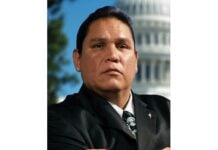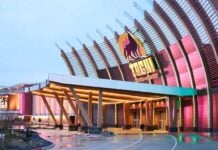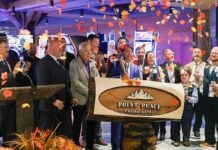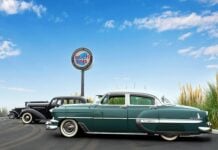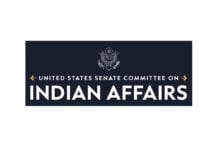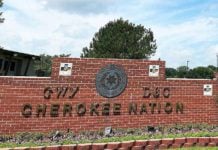by Matthew J. Klas
Gas stations and convenience stores are one of the most common investments for tribes expanding and diversifying their economies. Over 40 percent of federally recognized Indian tribes in the U.S. have a gas station or convenience store (c-store). These properties can play a valuable supporting role for casinos, keep capital on the reservation, generate tax revenue for tribal governments, and create jobs. They can also be essential to the community, providing a local place to purchase affordable food and household essentials.
As of April 2025, there were 245 tribes with 496 tribally-owned gas stations/c-stores in 29 states. These include 215 gaming tribes with 458 gas stations/c-stores, of which 205 stores are located at or near a tribal casino. Table 1 presents a summary of tribally-owned gas stations/c-stores by state.
Table 1

California has the most tribes with gas stations/c-stores (50 tribes), as well as the highest number of tribally-owned gas stations/c-stores located at or near Indian casinos, with 38 stores. With respect to total store count, Oklahoma ranks first with 78 stores. Washington ranks second with 67 tribally-owned gas stations/c-stores, followed by California with 55 stores, Arizona with 43 stores and New Mexico with 36.
Roughly half of tribally-owned gas stations/c-stores carry a national fuel brand. Of those with national brands, 29.8 percent are ConocoPhillips (Conoco, Phillips 66 & 76); 18.5 percent are Chevron (Chevron/Texaco); 15.7 percent are Shell; 9.3 percent Exxon (Exxon/Mobil); and 5.6 percent Sinclair. Other national brands with multiple stores include Alon, AmBest, BP, Cenex, Sunoco, Tesoro and Valero.
Several tribes maintain their own fuel brands. The Choctaw Nation of Oklahoma has 17 Choctaw Travel Plaza locations, the Oneida Indian Nation of New York’s SavOn Convenience Store brand has eight locations, and the Seneca Nation of New York has five Seneca One Stop locations.
Owner-branded c-stores are also found across Indian Country. In New Mexico, the Pueblo of Laguna, through its Laguna Development Corporation, has Route 66 Travel Centers and 66 Pit Stops (four locations). In Oklahoma, the Chickasaw Nation has Chickasaw Travel Stops (nine locations). In Washington State, the Confederated Tribes of the Colville Reservation has Colville Fuels (six locations); the Puyallup Tribe has Tahoma Market and Tahoma Express (six locations); the Nisqually Indian Tribe has Nisqually Markets (five locations with fuel); and the Spokane Tribe of Indians has Spoko Fuels (four locations). In Wisconsin, owner-branded c-stores include the Ho-Chunk Nation’s WhiteTail Crossing brand (five locations) and the Oneida Nation of Wisconsin’s Oneida One Stop brand (seven locations). Many owner-branded c-stores still carry national fuel brands.
Additional facilities and amenities are common. Of the 496 total stores, 16.7 percent have a drive-through smoke shop, 9.1 percent have car washes, and 6.3 percent have amenities for truck drivers, including showers, laundry or trucker lounges. These truck stops often offer overnight parking for truck drivers.
Local communities often rely on these businesses not just for fuel, but also for food, groceries and other retail. Of course, many convenience stores only offer basic food and beverage, such as snack food and other “grab-and-go” items. But a focus on freshly-made, healthy food and expanded grocery offerings is becoming more common.
For example, Potawatomi Ventures, an economic development business of the Forest County Potawatomi Community, has developed the Fireside Market brand of fuel stations and convenience stores that emphasize locally sourced, made-to-order food, technological innovation and sustainability. There are two Fireside Market locations in Wisconsin, with a third currently under construction.
The Choctaw Nation in Oklahoma developed Choctaw Country Market, which features a full-service grocery store with sit-down deli area, made-to-order and pre-packaged meals, fresh produce, household necessities and an on-site butcher. To date, there are three Choctaw Country Markets in Oklahoma.
Another example is Maple Leaf Market, a convenience store brand developed by the Oneida Indian Nation of New York, which focuses on providing healthier grab-and-go meals and made-to-order food, as well as groceries and essential items. To date, there are four locations in New York.
Providing healthy food options and expanded grocery retail can be good business sense in some markets, but it can also fill an important gap in communities without nearby grocery stores. Many tribally-owned gas stations and convenience stores are located in areas with limited access to healthy and affordable food. The Economic Research Center (ERS) at the U.S. Department of Agriculture has identified low-income and low-access areas, more commonly called “food deserts,” across the U.S. These areas are low-income census tracts where a significant number or share of residents are at least 10 miles away from the nearest supermarket in rural areas or half a mile away in urban communities. Vehicle ownership is also considered. In comparing ERS data against the locations of tribally-owned gas stations and c-stores throughout the country, the results show that 198 tribally-owned gas stations and c-stores are located in low-income and low-access areas. In other words, 40 percent of tribally-owned gas stations and convenience stores are located in food deserts. For people in these communities, a supermarket may be more than 10 or even 20 miles away. The local convenience store may be the nearest, best place to purchase affordable, healthy food and other household essentials.
Gas stations and c-stores located near tribally-owned casinos can encourage guests to stay on the property longer, generating incremental gaming revenue at the casino. Approximately 41 percent of tribally-owned gas stations/c-stores are located either directly at a tribal casino or within close walking distance.
Many gas stations/c-stores have gaming machines of their own. There are 107 tribally-owned gas stations/c-stores that include on-site casinos (gasinos), as presented in Table 2. The typical tribally-owned gasino has approximately 119 gaming positions and seven fuel kiosks. However, these figures vary significantly by state. Approximately 40 percent of gasinos are within close walking distance of a larger casino. The remaining are stand-alone properties.
Table 2

Oklahoma has 45 percent of all gasinos, 45 percent of gasino fuel kiosks and 55 percent of gasino gaming positions in the country. At the same time, New Mexico has the highest number of fuel kiosks per gasino at 12; and Montana has the highest number of gaming positions per fuel kiosk at 45.5.
Indian Country gasinos tend to be physically larger than non-gaming gas stations/c-stores owned by tribes. Table 3 presents a comparison of tribally-owned gas stations/c-stores, with and without on-site gaming operations. Gasinos have a higher average number of fuel kiosks and significantly larger average building square footage due to the additional space required by the gaming operation. While gasinos represent approximately 22 percent of all stores, they account for 37 percent of all gas station/c-store square footage in Indian Country.
Table 3
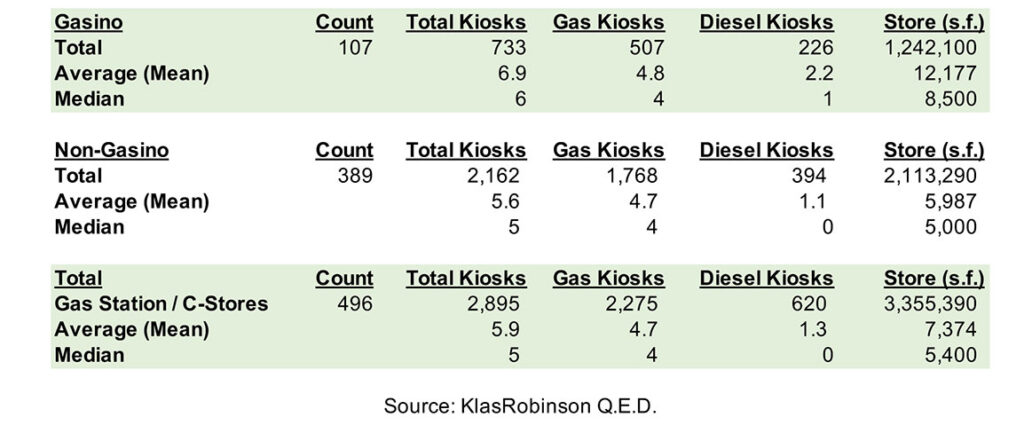
An excellent resource for tribes interested in the fuel and convenience store industry is the Tribal Convenience Store Association (TCSA), which represents 60 member tribes spanning multiple states. The TCSA’s mission: tribes helping tribes lead the convenience store industry through peer networking, vendor partnerships, and member education. Additional information on the TCSA can be found at www.tribalcstores.org.
Matthew J. Klas is a Senior Associate with KlasRobinson Q.E.D., a national consulting firm specializing in the feasibility and economic impact of casinos, hotels, and other related ancillary developments in Indian Country. He can be reached by calling (800) 475-8140 or email [email protected].














